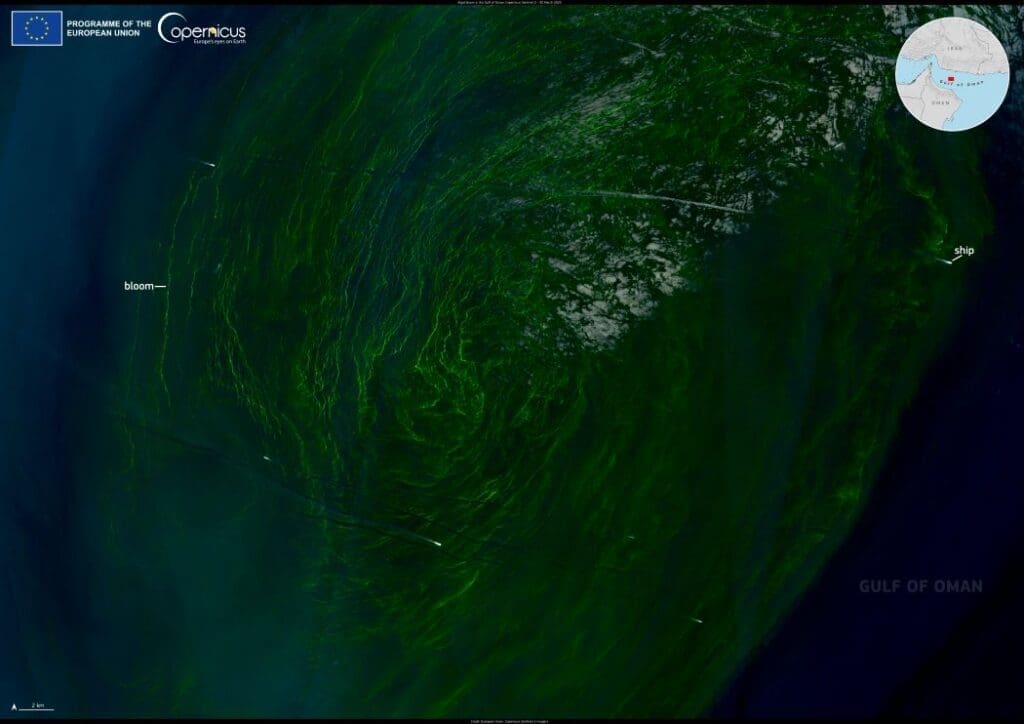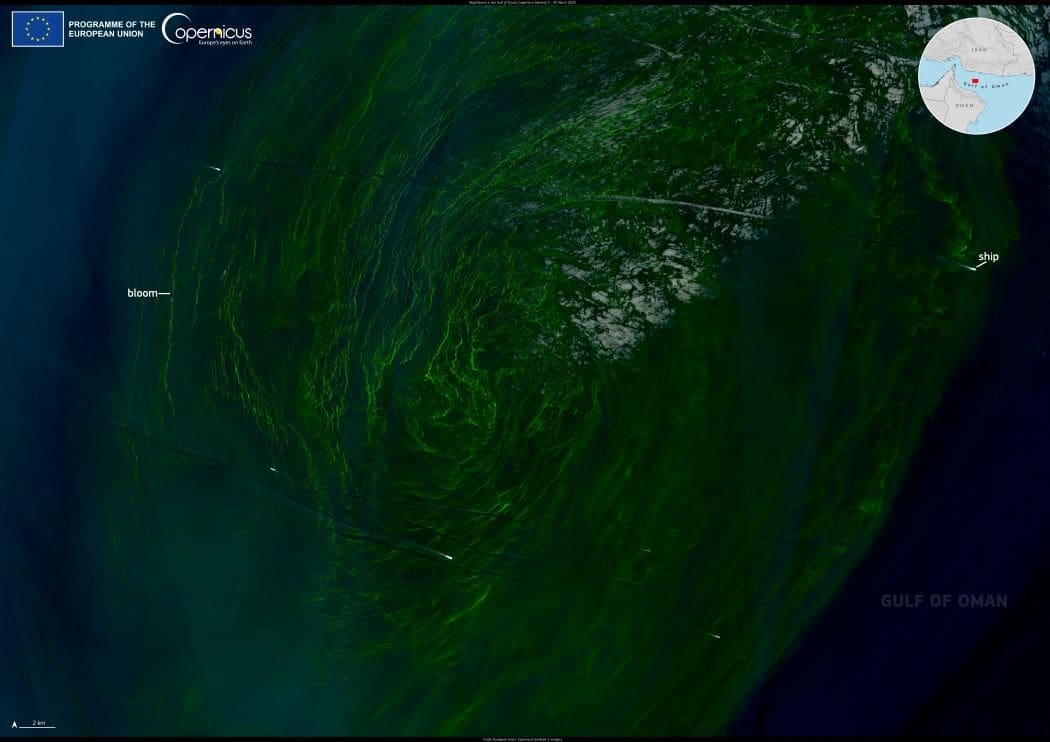Algal blooms frequently appear in the Gulf of Oman, driven by nutrient availability, temperature, and light conditions. One of the most striking contributors is Noctiluca scintillans, a bioluminescent plankton species that exists in red and green forms. The green variety, seen in this event, contains a photosynthetic symbiont called Pedinomonas noctilucae, which gives it its vivid coloration. While visually striking, these blooms can disrupt marine ecosystems by depleting oxygen and altering food chains, impacting local fisheries and biodiversity.

This Copernicus Sentinel-2 image, acquired on 30 March 2025, captures the swirling green bloom in the Gulf of Oman. Such satellite observations are crucial for tracking algal bloom events and assessing their impact on marine environments.
Unlike traditional phytoplankton, Noctiluca scintillans thrives in stratified, low-nutrient waters, creating conditions that can be detrimental to marine life. The Copernicus Sentinel satellites and the Copernicus Marine Service provide essential data to monitor these changes, helping policymakers develop strategies to mitigate their effects and protect coastal communities.
Featured image credit: European Union, Copernicus Sentinel-2 imagery




